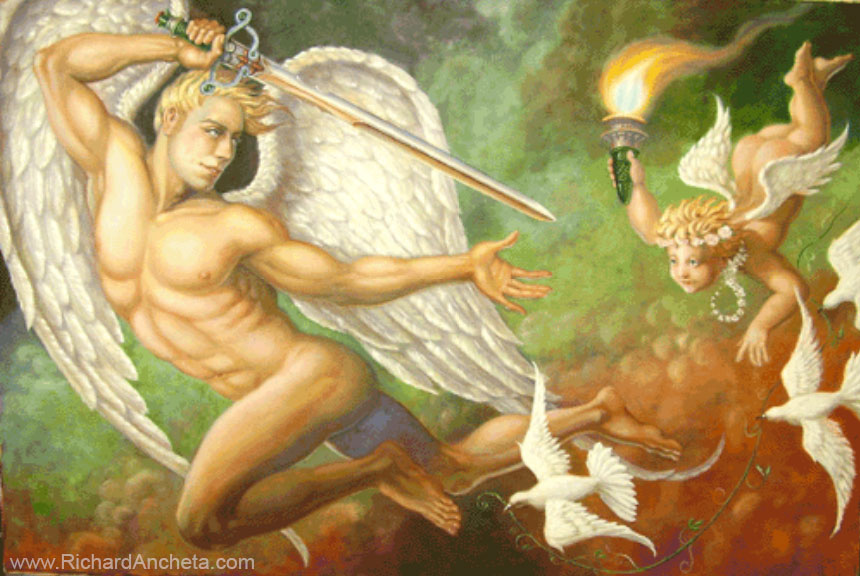Neoclassical Mural Painting
The neoclassical painting style dominated the arts from about 1750 until the mid-19th century. It originated in Britain, France, Italy, and Germany and disseminated throughout the rest of Europe as far as Russia and to the United States. The style embraced architecture, painting, sculpture, the decorative arts, and even, toward 1800, clothing and jewelry. The term neoclassicism, which was not used by the artists themselves, describes works heavily influenced by the art of classical antiquity. It was a reaction against the frivolity of the previous generation of rococo artist.

The Savior - Mural 60" x 40"
Classical antiquity had been an important model for European artist since the Renaissance, but in the mid-18th century its influence became particularly strong. This task for Greek and Roman art was stimulated by fresh discoveries, travels, and publications in the field of archaeology. Excavations at Herculaneum, Pompeii, and elsewhere in Italy produced a wealth of fresh material for the study of antiquity. Many of these discoveries were described in archaeological books, published in increasing numbers from the 1950s onward. These reproduced more accurate engravings of sculptures, gems, cameos, paintings, buildings, and domestic objects, such as candelabra, than those hitherto available.
Until the mid 18th century, firsthand knowledge of classical art was derived primarily from Roman examples both original works and copies of the lost Greek models. Major painters, such as Jacques Louis David and Jean Auguste Dominique Ingres in France, produced outstanding portraits and history subjects. Most classical painters and sculptors believed that art should not only please the eye but also instruct the mind. This belief reinforced the academic hierarchy of artistic subject matter, which stressed the moral value of subjects drawn from the history and myths of classical Greece and Rome, and from the Old and New Testaments. Subjects drawn from postclassical literature and history, and momentous contemporary events, were also acceptable. Portraits, landscapes and still lifes were low in the hierarchy because they were deemed to be less edifying, but neoclassical artist continued to produce them. |

